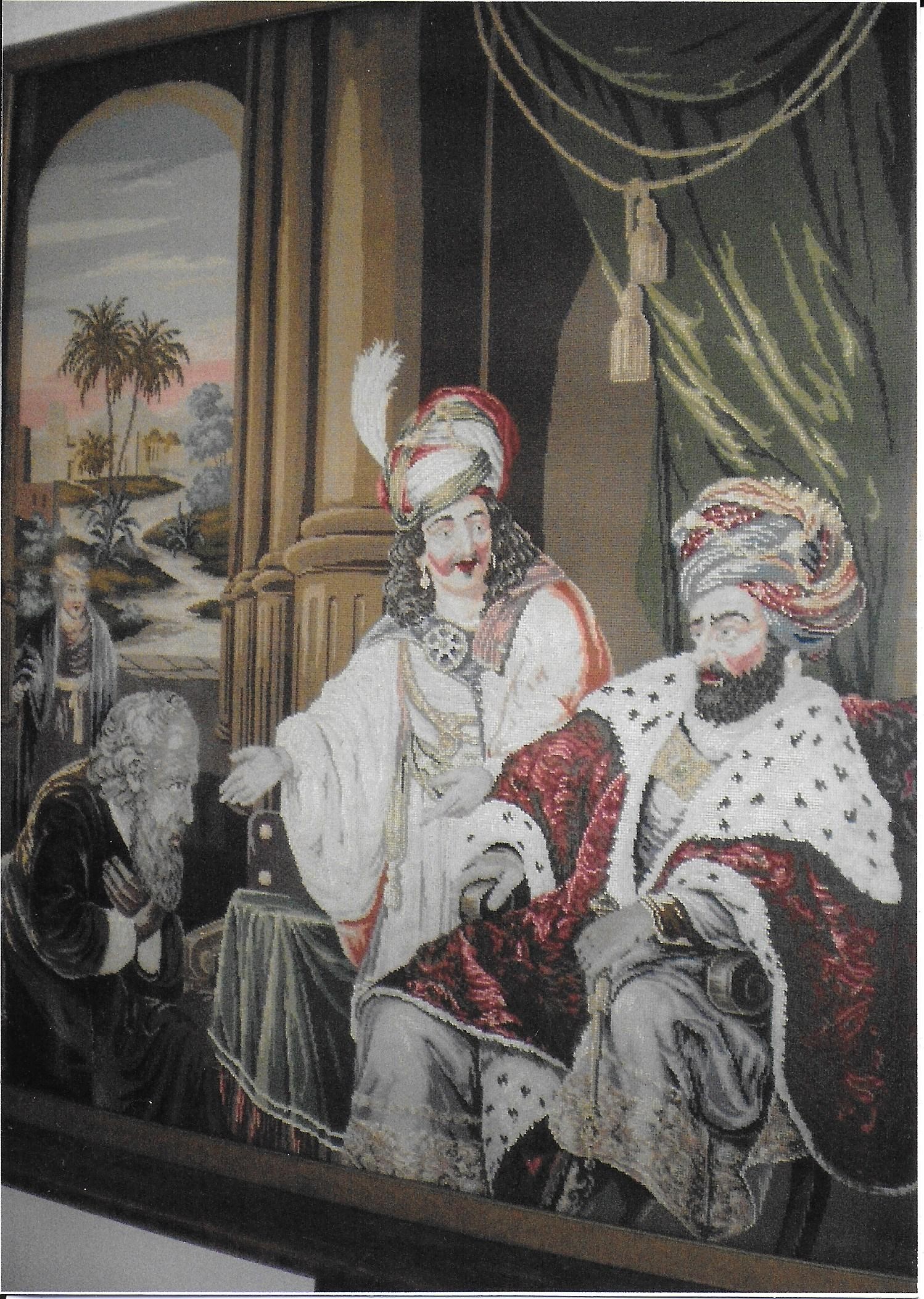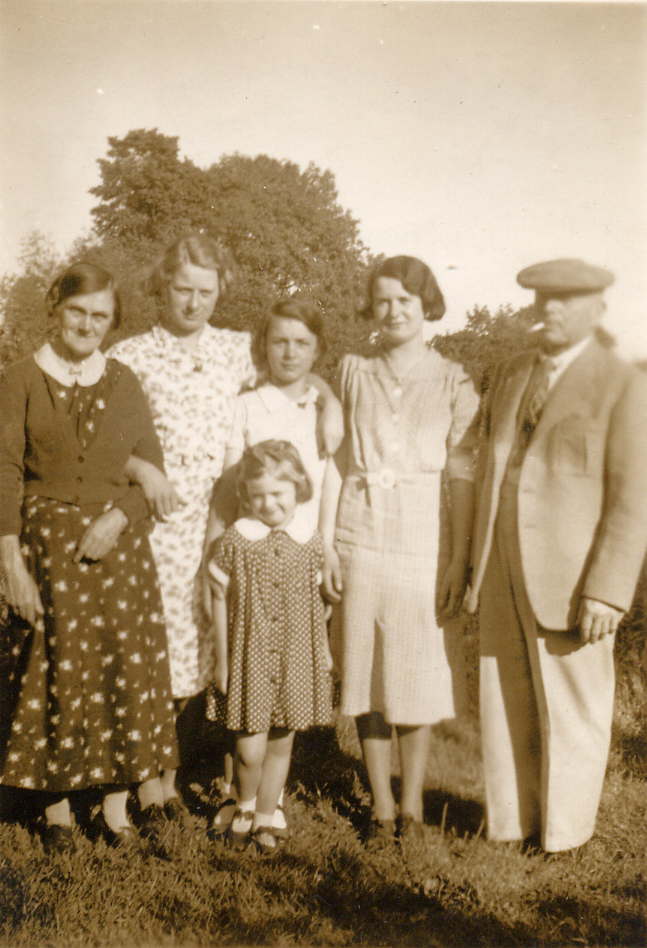Writing a family history
These days, there are many different ways of sharing our research and a lot of these can be online or at least begun whilst at home:- Articles
- Blog posts
- Family history websites
- Mini biographies
- Family history book
Sharing family trees
 |
| My tapestry family heirloom: "Joseph presenting his father to Pharaoh." |
Of course, if you are not looking to draw your research into a narrative, there are ways of sharing family trees only. Companies like Ancestry, FindMyPast, FamilySearch (and others) have facilities to share family trees online. I personally have used Ancestry in the past and have shared my tree both with current Ancestry members and other relatives through email. I have found relatives all the way across the world in Australia. The stories that have been passed down to them add extra information to the stories passed down to me. One of my Australian relatives then sent me a photograph of a tapestry that was passed down through her branch of the family. My branch also has a tapestry (of a different subject) that was made by the same ancestor as the Australian tapestry.
Something to consider with websites like these, is the level of privacy and security you get. It is a well-known fact that Ancestry allows members to elect to have a public or private tree. Bear in mind though, that according to the Ancestry terms and conditions, anything you post that is public on the website is automatically available for anyone to see and to use. Reading the terms and conditions of these sites is always a good idea, especially if you are intending to share family information. If you don’t agree, choose a different way to share. I never use an online based service for my clients. Instead I use an offline program. There are various computer programs now that can create and manage family trees. They can even produce an output that is easily transferable through email or printing and can be shared with other family members. Each one is different, so read any instructions or help articles if you have one already. If you don’t, have a good look at the ones available and choose the one that suits your family history needs best.
Write you own history
But we can help future generations to remember us in this way, where our ancestors haven’t been able to. Recently, I have started writing a mini-autobiography of my life so far. Not only will this give a fuller account of the everyday things for future generations, but it is a good task for when we are all needing to stay at home. It is to some extent, an extension of interviewing relatives (have a look at my first post in this series). The only difference is that you need to ask yourself questions. I mentioned when I wrote about interviewing relatives, that people find it easier to talk when they have something to focus on first. It is exactly the same if you think about writing your own story. Think about what you consider important- what would you want future generations to know about you? At the same time, you don’t necessarily have to include everything, down to the time you went to the dentist last week. Perhaps you might like to include pets, friends, schools and events that had a particular impact on your life.
As with interviewing relatives though, be aware that some things may be difficult to put down. Don’t push yourself, perhaps you might be able to come back to some things later on in your life. Although this is a good time for this kind of activity, many of us don’t have as much support as we usually would. So take care if you think you might touch upon anything that could have a detrimental impact right now. An extension of this idea would be to document life as it is right now, so that generations to come could get an idea of how their ancestor’s lives were impacted during the COVID-19 crisis. What things have changed from the way life usually progresses?
The children are the future
 |
| Photograph of family members who I wish I had learnt more about as a child. |
Spending more time at home for some, means planning activities for their children too. Perhaps we don’t talk about involving children and young people in genealogy as much as we should. They will be the ones who remember us. The number of times I and even my parents, have wished we had the interest as children to ask relatives about their lives, is quite large. It seems to be quite common that people unfortunately only become interested, after the people with the answers are no longer with us. See another previous post for an interesting idea of how to involve children in genealogy. There are also various other blog posts and articles around at the moment which give some ideas about how to introduce children to genealogy and family history. You can find an good one on this topic here. It was written by a fellow genealogist and contains some thought-provoking ideas. Family Tree Magazine also has an interesting post with some further thoughts.
So, whether you decide to write your autobiography, your whole family history, or just share your family tree with relatives, now is a good time to do it. Even though we may not be sharing our research in person at the moment, the wonders of modern technology mean that we are at least still able to.
Copyright © 2020 Shersca Genealogy
No comments:
Post a Comment